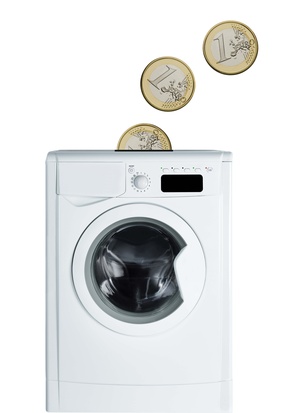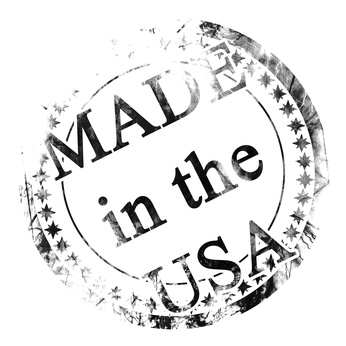Turn Yourself on to Eco-Friendly Appliances
With Americans using more than 50 household appliances on a regular basis, 20 percent of U.S. energy consumption is residential. And if you think you are the exception and you couldn't possibly use that many household appliances, peruse the list below. You will be surprised at just how many of these products you have in your home. Note, they are listed in descending order, from the appliance that uses the most energy to the least, as calculated by GE based on a number of sources, including Energy Star, the U.S. Environmental Protection Agency and the U.S. Department of Energy.
Consider Your Current Household Appliance Use

| Appliance | Watts |
|---|---|
| Electric Furnace | 17,221 |
| Central A/C | 5,000 |
| Clothes Dryer | 3,400 |
| Oven | 2,300 |
| Dishwasher | 1,800 |
| Hair dryer | 1,538 |
| Coffee Machine | 1,500 |
| Space Heater | 1,500 |
| Microwave | 1,500 |
| Popcorn Popper | 1,400 |
| Toaster Oven | 1,200 |
| Iron | 1,100 |
| Toaster | 1,100 |
| Cooking Range | 1,000 |
| Room A/C Unit | 1,000 |
| Vacuum Cleaner | 650 |
| Water Heater | 479 |
| Clothes Washer | 425 |
| Espresso Machine | 360 |
| Dehumidifier | 350 |
| Plasma TV | 339 |
| Blender | 300 |
| Freezer | 273 |
| LCD TV | 213 |
| Video Game Player | 195 |
| Refrigerator | 188 |
| Monitor | 150 |
| Standard TV | 150 |
| Computer | 120 |
| Electric Blanket | 100 |
| Stand mixer | 100 |
| Can Opener | 100 |
| Portable Fan | 100 |
| Curling Iron | 90 |
| Ceiling Fan | 75 |
| Humidifier | 75 |
| Incandescent Bulb | 60 |
| Stereo | 60 |
| Laptop | 50 |
| Printer | 45 |
| DVR | 33 |
| Aquarium | 30 |
| Cable Box | 20 |
| CFL Bulb | 18 |
| DVD Player | 17 |
| Satellite Dish | 15 |
| VCR | 11 |
| Clock Radio | 10 |
| Portable Stereo | 7 |
| Wireless Router | 7 |
| Cell Phone Charger | 4 |
| Cordless Telephone | 3 |
| Answering Machine | 1 |
Look For the Energy-Saving "Energy Star" Logo
In 1992, the Environmental Protection Agency and the U.S. Department of Energy joined forces to create the Energy Star program, it's mission to make it easy for Americans to identify energy-efficient appliances to save us money and help protect the environment. Though the program has come under scrutiny for a breakdown in Energy Star certification requirements, in April 2010 the EPA and DOE responded with stricter regulations.
Current Energy Star certifcation requirements are as follows:
- Before applying for Energy Star certification, appliance manufacturers must conduct and submit lab tests proving the product is energy efficient AND does not sacrifice performance, features or comfort
- Each application is personally reviewed by an Energy Star staff member
- Manufacturers are prohibited from putting the Energy Star logo on their products until final, formal approval
Though not all Energy Star products qualify you for a tax credit, many of them do. Since several of them are set to expire at the end of 2010, now is the time to consider the investment. Beyond that, there are other tax credits avaialble for some Energy Star products purchased by 2016.
Tax Credits
Through 2010, you may be able to take a tax credit of 30 percent (up to $1,500) on the following appliances installed in an existing home:
- Windows and Doors
- Insulation
- Roofs (metal and asphalt)
- HVAC (central air, heat pumps, furnaces and boilers)
- Water Heaters
- Biomass Stoves
Through 2016, you may be able to take a tax credit of 30 percent (no max) on the following products installed in an existing or new home:
- Geothermal Heat Pumps
- Solar Panels
- Solar Water Heaters
- Small Wind Energy Machines
Through 2016, you may be able to take a tax credit of 30 percent (up to $500 per year
- Fuel Cells
It probably goes without saying, but Energy Star notes, renters are not eligible for these tax credits.
Buy "Made in the USA" - When You Can

As with anything else you purchase, buying appliances close to home cuts down on the energy associated with shipping, thus reducing your carbon footprint. Fortunately, there are a number of manufacturers that make all or some of their appliances in the USA. There is the added bonus of keeping US jobs from going overseas.
This list is by no means exhaustive. In fact, if you know of other manufacturers that make their appliances in the USA, please let us know, including the relevant link for reference. Also, keep in mind that manufacturers change their plant locations all the time, so what is made in the USA today may be produced elsewhere tomorrow. And a manufacturer may produce some of its products in the USA, others not. In other words, this list is simply meant as a starting point to simplify your research. Bottom line: always verify the made in USA claim at the point of sale. Beyond that, and perhaps more importantly, look for and ask about Energy Star certification.
|
| ||||
|
| ||||
|
|
